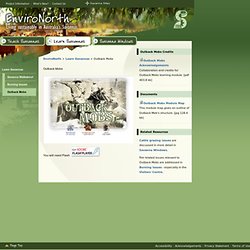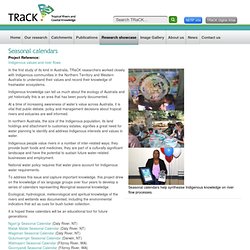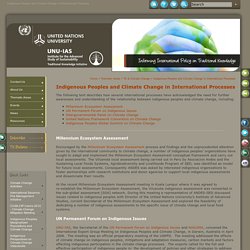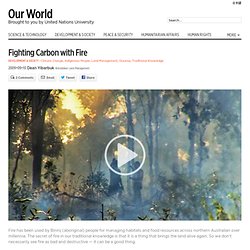

Renewable energy for remote Aboriginal communities. Twelve Canoes. EnviroNorth - Outback Mobs. Skip Navigation Project Information | What's New?

| Contact Us Outback Mobs Credits Outback Mobs AcknowledgementsCollaboration and credits for Outback Mobs learning module. [pdf 403.8 kb] Documents Outback Mobs Module MapThis module map gives an outline of Outback Mob's structure. Related Resources Cattle grazing issues are discussed in more detail in Savanna Windows. Fire related issues relevant to Outback Mobs are addressed in Burning Issues - especially in the Visitors' Centre. EnviroNorth > Learn Savannas > Outback Mobs Outback Mobs You will need Flash Accessibility | Acknowledgements | Privacy Statement | Terms of Use. Monash Country Lines Archives. Seasonal calendars. In the first study of its kind in Australia, TRaCK researchers worked closely with Indigenous communities in the Northern Territory and Western Australia to understand their values and record their knowledge of freshwater ecosystems.

Indigenous knowledge can tell us much about the ecology of Australia and yet historically this is an area that has been poorly documented. At a time of increasing awareness of water’s value across Australia, it is vital that public debate, policy and management decisions about tropical rivers and estuaries are well informed. In northern Australia, the size of the Indigenous population, its land holdings and attachment to customary estates, signifies a great need for water planning to identify and address Indigenous interests and values in water. National water policy requires that water plans account for Indigenous water requirements. It is hoped these calendars will be an educational tool for future generations: Larrakia Calendar. UNU - IAS. The following text describes how several international processes have acknowledged the need for further awareness and understanding of the relationship between indigenous peoples and climate change, including: Millennium Ecosystem Assessment Encouraged by the Millennium Ecosystem Assessment process and findings and the unprecedented attention given by the international community to climate change, a number of indigenous peoples’ organizations have sought to adapt and implement the Millennium Ecosystem Assessment conceptual framework and carry out local assessments.

The Vilcanota local assessment being carried out in Peru by Asociacion Andes and the Sustaining Local Foods Systems, Agrobiodiversity and Livelihoods Program of IIED, was identified as model for future local assessments. Consequently ANDES was asked by interested indigenous organizations to foster partnerships with research institutions and donor agencies to support local indigenous assessments and disseminate their results. Aboriginal fire management Arnhem Land.
Fire has been used by Bininj (aboriginal) people for managing habitats and food resources across northern Australian over millennia.

The secret of fire in our traditional knowledge is that it is a thing that brings the land alive again. So we don’t necessarily see fire as bad and destructive — it can be a good thing. Unfortunately, today fire is not being well looked after in many places in Northern Australia. However, it continues to be managed well around the outstations where people live all the time, such as at Kabulwarnamyo, where I live. To go forward, we need to encourage our children in the ways of the past. As a Bininj man from Nangark of the Gurrguni clan, I hold much knowledge regarding my people’s traditional use of fire and have a great responsibility to ensure that this knowledge is passed down to younger generations, and more importantly, that this knowledge is still used and practised into the future to keep our country alive and healthy.
Walking on country with spirits, Nth Qld. Located on the eastern shore of Australia’s tropical north, Shipton’s Flat is home to Marilyn, a Kuku Nyungkal Aboriginal woman, and her family.

She has been living here the ancestral way — far removed from the services and conveniences of modern life. Like her ancestors before her, Marilyn walks through the Nyungkal bubu, the Nyungkal’s country, acknowledging and conversing with the spirit beings around her. She greets the spirit of the flowing stream that provides her family with freshwater, the spirits of her mother, father and grandparents that cared for the country before her, the spirits of her ancestors that have been formed into rocks, and the spirits of the trees and animal life around her that lend shade and sustenance.
Sea level rise in Kowanyama Qld. “When that whole ocean comes and rises up, where are we going to go?”

Ponders Inherkowinginambana, a Kunjen elder from Kowanyama, a coastal Aboriginal community in tropical Queensland, Australia. “Every year it (the tide) comes in, it goes a bit further up….once it hits the swamps, that will kill all the plant life, and the waterways,” adds an Aboriginal ranger who works with local elders to protect Aboriginal country and culture. These tidal changes are not unique to Australia. Global climate change is increasing sea level worldwide. Historically, scientists have documented a wide fluctuation in sea level rise. So how does climatic warming lead to sea level change? Research has shown that thermal expansion of sea water is the leading contributor to sea level change. As the temperature increases, the ocean warms, causing water to expand and the sea level to rise; similar to what happens when bottled water is left out in the heat.